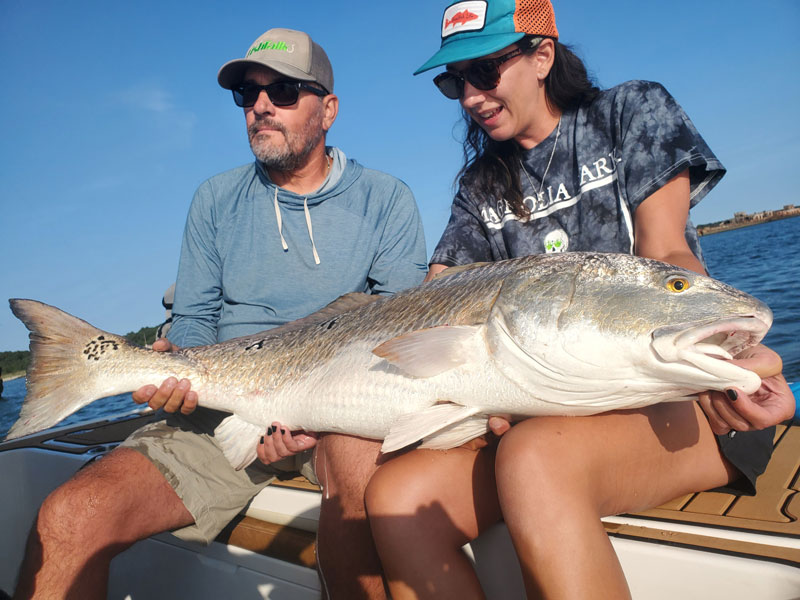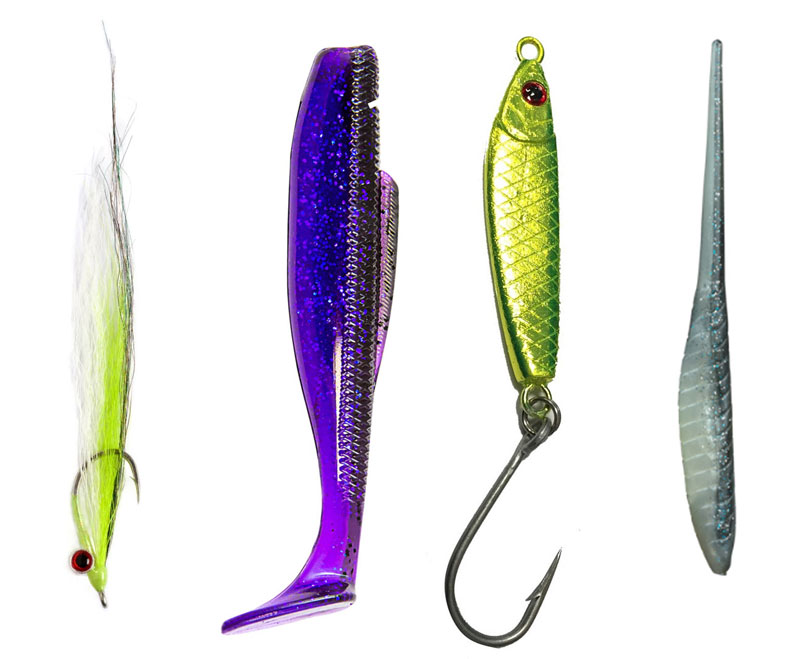When it comes to hunting for the red drum of a lifetime, you're looking for a fish that's monstrous. Ginormous. Hugemungous. And nowhere is your shot better than late summer on Chesapeake Bay.

We’ve covered targeting big bull reds more than once in FishTalk, and a survey of past articles reveals an interesting twist in that coverage: the intel has come from several different captains and sharpies, based in both Maryland and Virginia. And naturally, everyone has their own take on things. To celebrate the return of redfish this year we decided to bring you an amalgamation of some of the highlights these different perspectives provide.
The Where for Bull Redfish
- The number one clue which leads me to giant bull reds is finding the biggest bluefish in an area. Stripers, blues, and Spanish mackerel will often be demolishing bay anchovies in late summer, and where you find the biggest blues is often where you find the biggest redfish. Typically they’ll be in 20’ or more of water, and I’ve had my best luck from Flag Harbor across to Taylors Island, up to Sharps Island and Breezy Point. – Capt. Pete Dahlberg
- I catch most of these fish within 100’ of one of the CBBT islands, primarily the first and second islands. Look for places where the rocks are different, where the island curves in or curves out. Often big reds will hold close to the rocks in these locations. – Hampton Correspondent Chuck Harrison
- The most important thing for me is Humminbird Mega Side Imaging. The big schools of red drum in the middle Chesapeake are like roaming buffalo, and you need to cover a lot of water while scanning for them. We will effectively cover over 100 miles looking for them on many trips. – Capt. Steve Griffin
The How for Bull Redfish

- These fish will almost always eat but they move fast, so getting your lure down to them before they’re gone is key. You won’t find a jig less than 1.5 ounces on our boats for redfish and on windy days we’ll even throw a four-ounce G-Eye. – Steve G.
- Once a school of fish breaking on bait is located I’ll position upwind and up current, cut the motor, and gently drift towards the breaking fish. I love using BKDs for reds, but if bluefish are thick I’ll use a metal jig like a two- to three-ounce Hard Head Vertical Jig or a Specialized Baits Lil’ Bunker spoon. Bluefish-proof plastics are good to use, too. If I have four anglers on the boat I’ll have two people getting lures low in the water column and two fishing higher in the water column. – Pete D.
- Fly anglers can target big reds with a 10 weight and a sinking line. You can fish the sinking line in the shallows but if you notice activity on your bottom machine you won’t have to switch rods. A large Clouser minnow, in white and tan colors, will work well. – Contributor Kendall Osbourne
- I cast a plastic paddletail jig within several feet of the rocks and let it hit bottom, then begin working it back to the boat, jigging and allowing it to sink back to bottom. When I spot them schooled up swimming near the surface, I cast out in front of the direction the fish are heading in and let it sink down past the school. – Chuck H.
Tips for Targeting Bull Redfish
- After landing a big redfish replace your leader. The line will be stretched and often nicked up as well. A few feet of leader is a small price to pay for landing another trophy fish. – Chuck H.
- Since red drum often run in schools, keeping multiple lines in the water even after a drum is already on will result in multiple hook-ups. Although it’s a challenge to keep the lines from tangling, good communication and teamwork will pay off. On days with heavy winds, however, less is more to avoid additional chaos. – Contributor Beth Synowiec
- When looking for bull reds around breaking fish, going from one school to another is key. I’ll use binoculars extensively and keep moving until I find them. – Pete D.

Catch and Release Bull Redfish
Any fish that even comes close to qualifying as a true bull is well outside of the slot limit and must be released, so it’s incumbent upon all of us as responsible anglers to treat these fish with kid gloves. That means it’s ideal to snap off a photo with the fish in the water or lifted momentarily just above it. If you’ll be landing the fish make sure you have an appropriate fish-safe landing net with coated mesh, not knotted nylon, which scrapes slime off the fish thus removing its immune system. Also be sure nothing dry (including hands and towels) touches the fish, for the same reason. Keep your hands away from the fish’s gills and gill plate and instead hold it by the jaw with a pair of fish grips or sturdy gloves, and support it at the anal fin with your other hand. When removing a fish from the water hold your breath. When you realize you need to breathe remember that the fish does, too, and send it gently back over the side.
See Set the Catch and Release Bar for more detailed information on catch and release best practices.